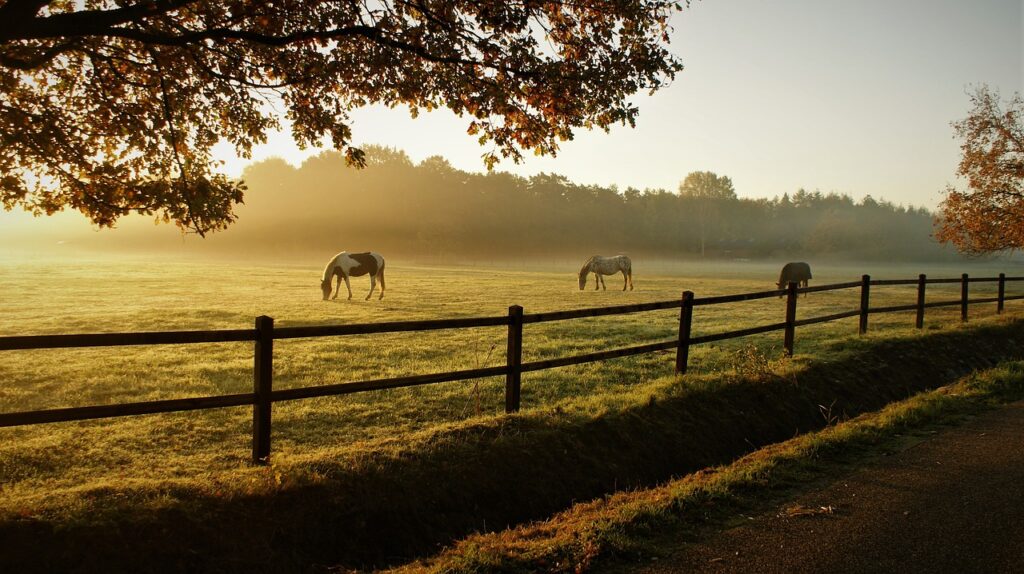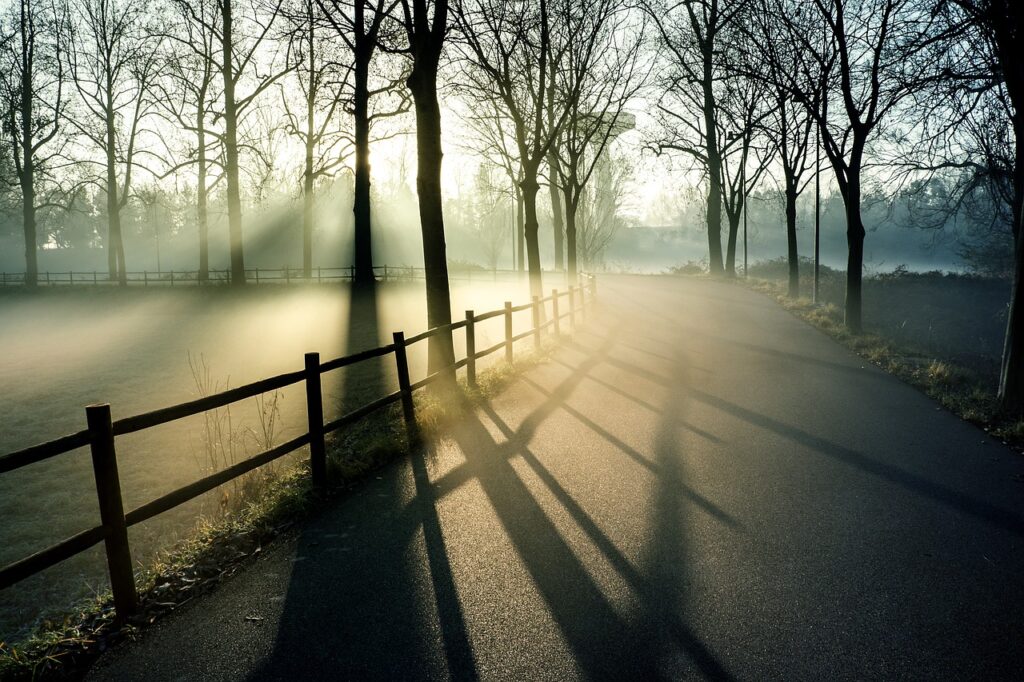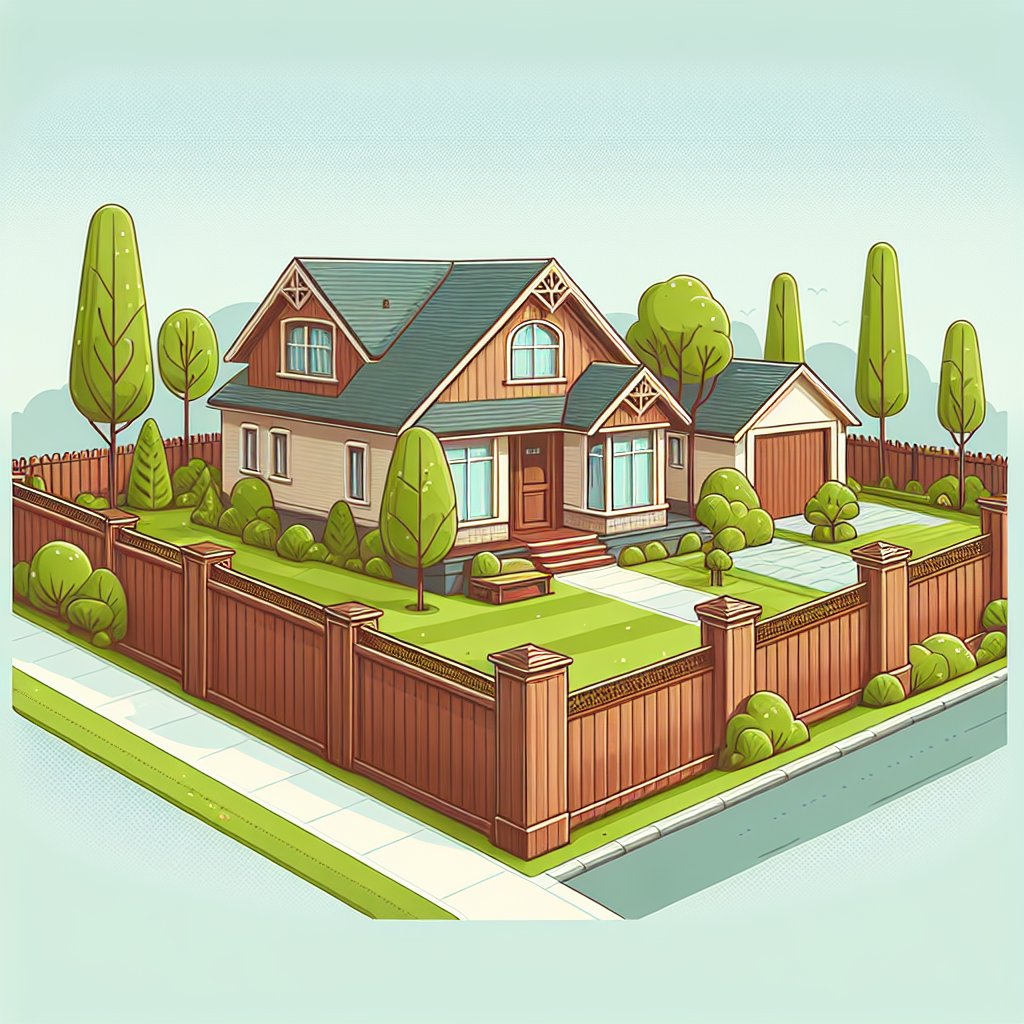You’ve been pondering the idea of adding a bit more privacy to your front yard, and you can’t help but wonder, “Can I put a privacy fence in my front yard?” It’s a common question that many homeowners have, and the answer might surprise you. In this article, we’ll explore the factors to consider when deciding whether you can install a privacy fence in your front yard. From regulations and aesthetics to neighborhood guidelines and practicality, we’ll help you navigate the decision-making process with ease. So, let’s uncover the possibilities and find out if a privacy fence is the right addition for your front yard.
Overview of Privacy Fences
A privacy fence is a structure built around a property to create solitude and block unwanted views from neighboring properties or the street. These fences are typically taller and sturdier than traditional fences, providing an increased level of privacy for homeowners. Privacy fences can be made from a variety of materials and come in different designs to suit individual needs and preferences.
Definition of a Privacy Fence
A privacy fence is a type of fence that is designed to enclose an outdoor space and provide privacy for the homeowners. It is typically taller, ranging from 6 to 8 feet in height, compared to other types of fences. Privacy fences are constructed in a way that prevents others from seeing through or accessing the enclosed area, offering a sense of seclusion and security.

Benefits of Having a Privacy Fence
There are numerous benefits to having a privacy fence in your front yard. Firstly, it enhances the level of privacy and security for you and your family. With a privacy fence, you can enjoy your outdoor space without worrying about prying eyes or intruders. It also acts as a noise barrier, reducing the intrusion of external sounds and creating a quieter environment within your property.
Another advantage is the increased property value that a privacy fence can bring. Potential buyers often consider privacy as an important factor when searching for a home, and a well-maintained privacy fence can add appeal and desirability to your property. Additionally, privacy fences can also serve as windbreakers, protecting your yard from strong winds and turbulent weather conditions.
Factors to Consider Before Installing a Privacy Fence
Before installing a privacy fence, there are several factors that you need to consider. Firstly, you should check the local zoning laws and regulations in your area to ensure that you are compliant with the guidelines set by the local government. These regulations may include height limitations, setback requirements, and even design restrictions.
It is also important to check with your homeowner’s association (if applicable) to determine any additional regulations or restrictions on fence installation. Some associations may have specific rules regarding materials, colors, or height limitations to maintain a cohesive look within the neighborhood.
Furthermore, understanding the permits and permissions required for installing a privacy fence is crucial. Depending on your location, you may need to obtain a permit from the local government before commencing the installation. Failure to obtain the necessary permits can result in fines or even the removal of the fence.

Local Zoning and Regulations
Understanding the local zoning laws is essential when considering a privacy fence installation. Zoning laws regulate how properties can be used, including the types of fences allowed and their specifications. These laws vary from one jurisdiction to another, so it is important to research the specific regulations in your area.
Checking with your homeowner’s association regulations is also crucial, especially if you live in a community or development with specific guidelines. Homeowner’s associations often have their own set of rules regarding fence materials, styles, and maximum heights. Familiarize yourself with these regulations to ensure that your privacy fence meets the requirements.
Additionally, it is important to determine the permits and permissions required for installing a privacy fence. Contact your local government office or building department to inquire about the necessary permits and the process for obtaining them. Make sure to submit all required documents and pay any fees to avoid any potential issues in the future.
Types of Front Yard Fences
There are various types of front yard fences to choose from when considering a privacy fence. Each type has its own unique characteristics, aesthetic appeal, and maintenance requirements. Here are some popular choices:
Traditional Wooden Fences
Traditional wooden fences offer a classic and timeless look. They can be constructed from different types of wood, such as cedar, pine, or redwood. Wooden fences provide excellent privacy and can be customized to match your desired height and design. However, they require regular maintenance, such as staining or painting, to protect them from weathering and decay.
Vinyl Privacy Fences
Vinyl privacy fences are a low-maintenance option that provides durability and privacy. These fences are resistant to rot, insects, and fading, making them a long-lasting choice. Vinyl fences come in various colors and styles, allowing you to choose the one that complements your home’s aesthetics. While they may have a higher upfront cost, vinyl fences require minimal maintenance over their lifetime.
Ornamental Metal Fences
If you desire a more decorative and elegant look for your front yard, ornamental metal fences are an excellent option. Typically made from aluminum or wrought iron, these fences add a touch of sophistication to your property. Ornamental metal fences can be customized with intricate designs, but their main drawback is their limited privacy, as they often have spaces between the metal bars.
Brick or Stone Fences
Brick or stone fences provide a solid barrier that ensures both privacy and security. These fences are durable and require minimal maintenance. When built with quality materials, brick or stone fences can withstand harsh weather conditions and maintain their appearance for many years. However, they tend to be more expensive and time-consuming to construct compared to other options.
Hedge or Plant-Based Fences
For a more natural and environmentally friendly choice, consider a hedge or plant-based fence. These fences utilize plants, such as shrubs or bushes, to create a beautiful and green privacy barrier. Plant-based fences can be cost-effective and provide additional benefits like noise reduction and wildlife habitat. However, they require regular trimming and upkeep to maintain their desired shape and privacy level.

Privacy Fence Materials
When choosing privacy fence materials, it is important to consider factors such as durability, maintenance requirements, and cost. Here is a comparison of different privacy fence materials:
Wood
Wood is a popular and versatile material for privacy fences. Different types of wood offer varying levels of durability and resistance to rot and decay. Cedar and redwood are commonly used due to their natural resistance to insects and weathering. Wood fences can be customized with different textures and finishes, but they require regular maintenance and staining to prolong their lifespan.
Vinyl
Vinyl fences are a low-maintenance option that is resistant to rot, decay, and insects. They are available in various colors and styles, allowing you to choose the one that best suits your preferences. Vinyl fences are durable and long-lasting, although extreme temperatures can cause them to expand or contract. They do not require painting or staining, but occasional cleaning is recommended to keep them looking their best.
Metal
Metal fences, such as aluminum or wrought iron, offer strength and durability. They provide excellent security and can be customized with decorative designs. Metal fences require minimal maintenance, but they may need periodic painting to prevent rust. Keep in mind that metal fences may not provide as much privacy as other materials due to the spacing between the bars or panels.
Brick or Stone
Brick or stone fences are solid and durable options that offer maximum privacy and security. These materials are long-lasting and require minimal maintenance. The main consideration with brick or stone fences is the initial cost and the time required for construction. Additionally, it is important to choose high-quality materials that can withstand the elements for years to come.
Living Materials
Hedge or plant-based fences offer a natural and environmentally friendly alternative to traditional fence materials. By using plants, such as shrubs or bushes, you can create a green and visually appealing privacy barrier. These living fences require regular trimming and maintenance to maintain their shape and privacy level. However, they offer additional benefits such as noise reduction, wildlife habitat, and improved air quality.
When selecting a privacy fence material, consider the specific needs of your property, your budget, and the level of maintenance you are willing to undertake. By choosing the right material, you can ensure that your privacy fence will not only provide the desired level of privacy but also enhance the aesthetics of your front yard.
Height and Design Restrictions
When installing a privacy fence in your front yard, it is important to be aware of any height limitations and design restrictions imposed by local regulations or homeowner’s associations.
Maximum Height Limitations
Many municipalities have specific regulations regarding fence heights in front yards. These regulations are often in place to maintain the uniformity and appearance of the neighborhood. It is important to check with local zoning laws to ensure that your privacy fence does not exceed the maximum height allowed. Violation of these regulations can result in fines or even the removal of the fence.
Design Restrictions and Aesthetics
In addition to height limitations, some areas may also have design restrictions for front yard fences. These restrictions may include specific materials, colors, or styles that need to be followed in order to maintain a cohesive look within the neighborhood. Familiarize yourself with these restrictions to ensure that your privacy fence meets the required design guidelines.
Maintaining the View of the Street
While privacy is important, it is also necessary to consider the impact of a privacy fence on the overall aesthetics of your neighborhood. Some municipalities require front yard fences to have openings or other design elements that allow the passersby to see the front of the house from the street. This ensures that the fence does not interfere with community safety or the visual appeal of the neighborhood.

Boundary and Property Lines
Before installing a privacy fence, it is crucial to determine the exact boundary and property lines of your front yard. This will help prevent potential disputes with neighbors and ensure that you are not encroaching on their property.
Determining Property Lines
To determine your property lines accurately, you can refer to your property survey, which is often provided at the time of purchasing your home. Property surveys outline the dimensions and boundaries of your property, including easements or setbacks. If you do not have a property survey, you can hire a professional surveyor to survey your land and mark the boundaries.
It is also recommended to discuss your plans with your neighbors to ensure that there is a mutual understanding of the property lines. Open communication can help avoid conflicts and ensure that your privacy fence will be installed within the boundaries of your property.
Neighbor Agreements and Potential Disputes
Installing a privacy fence in your front yard may impact your neighbors, especially if the fence is close to their property. It is courteous to discuss your plans with your neighbors and address any concerns they may have. Being considerate and transparent can help maintain good relationships and minimize the chances of disputes arising regarding the installation of the fence.
If conflicts or disputes do arise, it is recommended to approach the situation calmly and come to a resolution through open communication or mediation. In some cases, legal assistance may be required to settle any boundary or property line disputes.
Installation Process
Once you have determined all the necessary permits, regulations, and property boundaries, you can begin the installation process for your privacy fence. Before diving in, consider whether you want to undertake the project yourself or hire professionals.
Do-It-Yourself vs. Hiring Professionals
Installing a privacy fence can be a complex and time-consuming task. If you have experience with construction and the necessary tools, you may choose to tackle the project yourself. However, it is important to assess your skills and abilities honestly before proceeding. Hiring professionals ensures that the fence is installed correctly and efficiently, saving you time and potentially costly mistakes.
Tools and Equipment Required
Whether you choose to install the privacy fence yourself or hire professionals, there are several tools and equipment that may be required. These can include:
- Measuring tape and level: To ensure accurate placement and alignment of fence posts and panels.
- Post hole digger or auger: For digging holes to set the fence posts securely.
- Concrete or gravel: To provide stability and support for the fence posts.
- Hammer and nails or screws: For attaching the panels or pickets to the posts.
- Saw or cutting tools: If customization or adjustments are needed to fit the fence panels.
- Power drill: For drilling pilot holes and attaching hardware.
- Work gloves and safety goggles: To protect your hands and eyes during the installation process.
It is important to have the necessary tools and equipment readily available before starting the installation to ensure a smooth and efficient process.
Step-by-Step Installation Guide
While the exact installation process may vary depending on the type of privacy fence and materials used, here is a general step-by-step guide for installing a privacy fence:
- Determine the layout and design of your fence, ensuring compliance with local regulations and property lines.
- Mark the locations for the fence posts using stakes or spray paint.
- Dig holes for the fence posts, ensuring they are deep and wide enough to provide stability.
- Set the fence posts in the holes, ensuring they are level and plumb.
- Fill the holes around the fence posts with concrete or gravel, and allow it to set.
- Attach the fence panels or pickets to the posts using nails or screws.
- Make any necessary adjustments or customizations to fit the fence panels or pickets.
- Ensure the fence is level and aligned correctly by using a level and measuring tape.
- Secure the panels or pickets to the posts, ensuring they are firmly attached.
- Finish the installation by adding any additional hardware or accessories, such as gates or latches.
Throughout the installation process, it is important to follow any manufacturer’s instructions and safety guidelines for the specific materials you are using. If you are unsure or unfamiliar with any of the steps, it is always best to consult a professional for assistance.

Cost of Installing a Privacy Fence
The cost of installing a privacy fence in your front yard can vary depending on several factors, including the type of material, the height and length of the fence, labor costs, and any additional features or accessories.
Factors Influencing the Cost
- Material: The type of material you choose for your privacy fence will greatly impact the cost. Wood tends to be more affordable initially, while vinyl and metal fences may have a higher upfront cost. Brick or stone fences are typically the most expensive option.
- Height and Length: The height and length of your fence will determine the number of materials required, affecting the overall cost. Taller fences and longer spans will generally require more materials and labor.
- Labor Costs: If you choose to hire professionals for the installation, labor costs will be an additional factor to consider. The complexity of the project and local labor rates can influence the overall cost.
- Additional Features: Any additional features or accessories, such as gates, latches, or decorative elements, will incur extra costs.
Average Cost Estimates
While the cost of installing a privacy fence can vary significantly depending on the factors mentioned above, here are some average cost estimates to give you a general idea:
- Wooden fences: On average, wooden fences can cost between $15 and $30 per linear foot, depending on the type of wood and any additional features.
- Vinyl fences: Vinyl fences typically range between $20 and $40 per linear foot, considering the material’s durability and low maintenance requirements.
- Metal fences: Metal fences can cost between $20 and $50 per linear foot, taking into account the type of metal used and any decorative elements.
- Brick or stone fences: Brick or stone fences can range from $30 to $60 per square foot, considering the cost of materials and the labor-intensive installation process.
- Living fences: Hedge or plant-based fences can vary significantly in cost, depending on the type of plants used and the complexity of the design.
It is important to obtain quotes from multiple contractors or suppliers to get a more accurate estimate for your specific project. Additionally, consider any ongoing maintenance costs and potential repairs that may be required in the future.
Additional Expenses to Consider
When budgeting for your privacy fence installation, there are additional expenses to consider beyond the initial material and labor costs:
- Permits and fees: Depending on your location, you may need to obtain permits or pay fees for installing a privacy fence. These costs can vary significantly, so it is important to check with your local government.
- Removal of existing fence: If you have an existing fence that needs to be removed, this can incur additional costs, including debris removal and labor fees.
- Maintenance and repairs: Over time, your privacy fence may require maintenance or repairs, such as staining, painting, or replacing damaged parts. It is important to factor in these ongoing costs to ensure the longevity and appearance of your fence.
By considering all these factors and potential expenses, you can create a realistic budget for your privacy fence installation project.
Maintenance and Upkeep
To ensure the longevity and appearance of your privacy fence, regular maintenance and upkeep are essential. Here are some tips to help you keep your fence in optimal condition:
Cleaning and Preserving the Fence Material
The method of cleaning and preserving your privacy fence depends on the material used. Wooden fences may require periodic staining or painting to protect the wood from outdoor elements. Vinyl fences can be cleaned with a garden hose and mild soap to remove dirt and residue. Metal fences may need occasional inspections for rust and can be treated with rust-resistant paints or coatings. Brick or stone fences may require occasional power washing to remove stubborn stains or dirt.
Repairs and Replacements
Over time, your privacy fence may experience wear and tear, requiring repairs or replacements. Regularly inspect your fence for any loose boards, broken pickets, or damaged components. Replace or repair these as soon as possible to prevent further deterioration. Additionally, address any signs of rot, insect damage, or structural issues promptly to maintain the integrity of your fence.
Annual Maintenance Tips
- Remove any debris, leaves, or vegetation that may accumulate around the fence.
- Trim any overgrown plants or tree branches that touch or damage the fence.
- Inspect the fence for any damage or loose components and address them promptly.
- Clean the fence regularly, following the appropriate cleaning methods for your specific material.
- Consider applying a protective sealant or coating if recommended for your fence material.
By performing regular maintenance tasks and addressing any repair needs promptly, you can prolong the lifespan of your privacy fence and ensure that it continues to provide the desired level of privacy and security.
Alternative Privacy Solutions
If installing a privacy fence is not feasible or desirable for your front yard, there are alternative privacy solutions that can still provide solitude and concealment. Here are a few options to consider:
Privacy Landscaping Options
Create a natural privacy barrier with strategic landscaping. Planting tall trees, shrubs, or bushes along the perimeter of your front yard can provide privacy while enhancing the aesthetics of your outdoor space. Consider using fast-growing evergreen plants for year-round privacy. Privacy landscaping can offer a more organic and environmentally friendly solution, although it may take time for the plants to reach the desired height and density.
Using Outdoor Curtains or Shades
If you have a covered front porch or patio, consider installing outdoor curtains or shades to create privacy when needed. These can be easily adjusted or drawn when you want to enjoy your outdoor space without prying eyes. Outdoor curtains and shades are available in various colors and materials, allowing you to customize the aesthetics to match your personal style.
Decorative Screens or Paneling
Decorative screens or paneling can provide privacy while adding a unique design element to your front yard. These screens can be made from various materials, such as wood, metal, or composite, and come in different patterns and designs. Decorative screens can be installed as stand-alone features or incorporated into your existing landscaping or fence to create privacy in specific areas.
When considering alternative privacy solutions, it is important to assess your specific needs and the feasibility of each option. Some solutions may require additional maintenance or care, so it is essential to consider the long-term implications and choose the option that best suits your preferences and lifestyle.
In conclusion, installing a privacy fence in your front yard can be a valuable investment, providing enhanced privacy, security, and aesthetics to your property. By understanding the local zoning laws and regulations, choosing the appropriate fence materials, and considering factors such as height limitations and property boundaries, you can ensure a successful and compliant installation. Regular maintenance and proper upkeep will keep your privacy fence looking its best for years to come. And if a privacy fence is not the right fit for your front yard, alternative privacy solutions can still offer the solitude and concealment you desire. Whether you choose a traditional wooden fence, a vinyl privacy fence, a brick or stone fence, or a living hedge, a well-constructed and properly maintained privacy barrier will create a serene and private outdoor space for you to enjoy.
